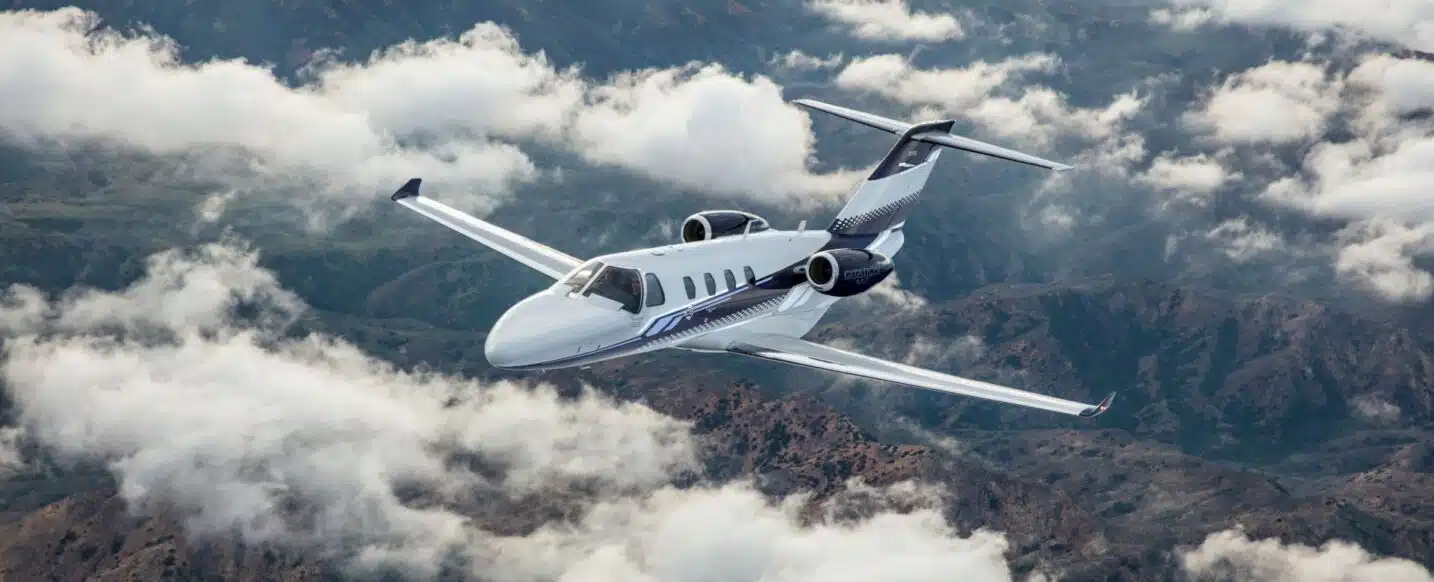
Cessna Citation Mustang Versus M2: Evolution of Entry Level Private Jets
The private aviation landscape has seen significant shifts over the past decade, with manufacturers continuously adapting their offerings to meet market demands. Among these developments, the transition from the pioneering Cessna Citation Mustang to the more advanced Citation M2 represents an important evolution in the light jet category. With the Mustang reaching operational maturity, many operators now face crucial decisions about future fleet planning. What are the key differences between these two aircraft, and what options exist for European charter clients and owners?
The Cessna Citation Mustang: A VLJ Pioneer
The Cessna Citation Mustang made history as being the first very light jet (VLJ) on the market to receive full certification, revolutionizing business aviation by creating a new entry-level segment. During its impressive 12-year production run from 2005 to 2017, Textron Aviation delivered over 470 Mustangs to customers worldwide, firmly establishing it as the most popular entry-level light jet of its era. In this category, the Mustang faced competition from aircraft like the Embraer Phenom 100 and the Eclipse 500, though it remained the dominant VLJ in terms of deliveries and charter presence.
Advantages of the Mustang
The Mustang quickly won favor among owner-pilots and charter operators for several compelling reasons:
The aircraft was designed with single-pilot operation in mind, featuring the intuitive Garmin G1000 glass cockpit that significantly reduced pilot workload. This single-pilot certification translated directly to lower operational costs compared to jets requiring two pilots, making private jet travel more accessible to a broader market.
With a maximum range of approximately 1,200 nautical miles (2,222 kilometers), the Mustang offered impressive capability for short to medium-haul trips across Europe. This range allowed operators to conduct missions such as London to Geneva or Frankfurt to Nice without refueling stops.
The Sunset of a Success Story: Why the Mustang is Phasing Out
Despite its commercial success, Textron Aviation announced the end of Mustang production in May 2017. Though production has ceased, approximately 130 Mustangs remain available in the global charter fleet, with a substantial number operating throughout Europe.
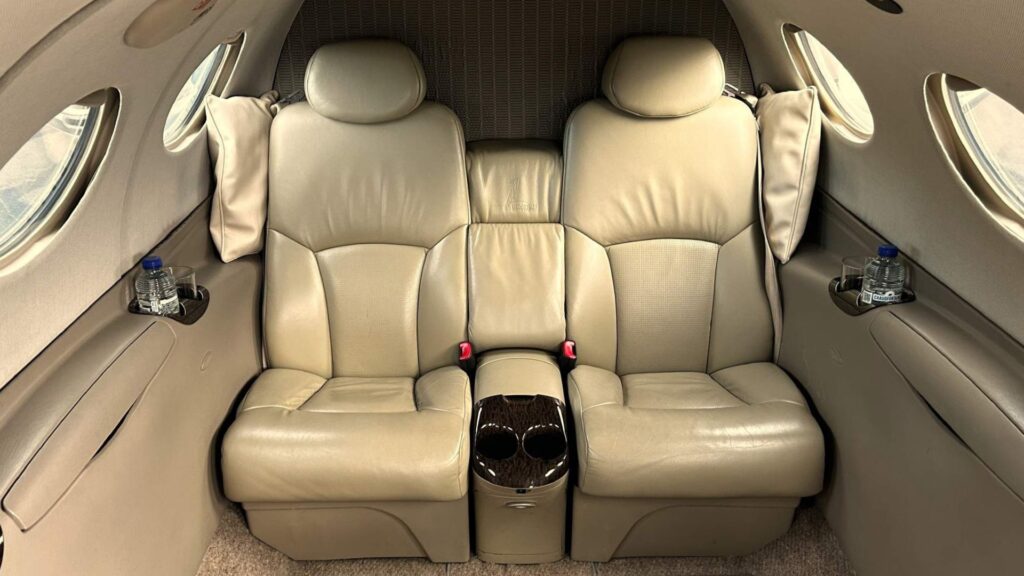
While the Mustang remains a viable option today, its long-term operation will become increasingly challenging as the global fleet approaches twenty years in service.
The Citation M2: Taking the Light Jet Category Forward
Recognizing the need for a successor to the Mustang, Textron Aviation introduced the Citation M2 in 2013. Though not classified as a very light jet, the M2 was positioned as the new entry point to the Citation product line, with nearly 150 aircraft delivered within its first four years of production.
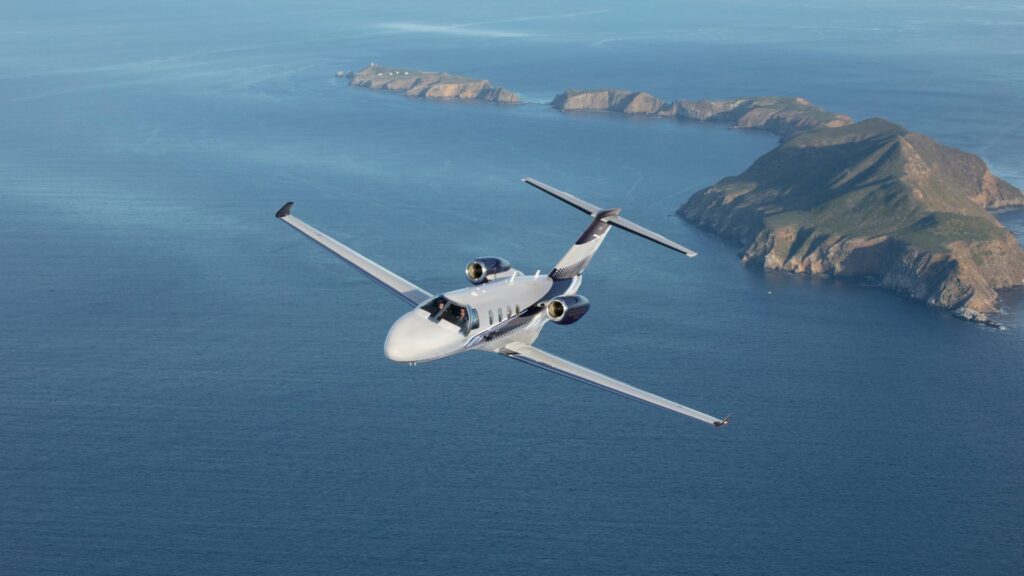
M2 Capabilities and Improvements
The Citation M2 represents a significant advancement over the Mustang in several key areas:
The M2 features the more sophisticated Garmin G3000 avionics suite with touchscreen controls, providing pilots with enhanced situational awareness and reduced workload compared to the G1000 system in the Mustang. While still certified for single-pilot operation, the M2’s cockpit technology offers capabilities previously found only in larger, more expensive business jets.
Performance improvements are substantial, with the M2 achieving a cruise speed of 748 km/h (compared to the Mustang’s 630 km/h) and extending maximum range to 1,550 nautical miles (2,871 km). This allows the M2 to handle routes such as London to Rome with full passenger capacity, compared to the Mustang, which may require fuel stops or weight restrictions.
The cabin experience also received significant upgrades, with the M2 offering seating for up to seven passengers and a cabin height of 1,45 meters. This more spacious interior provides greater comfort for passengers, particularly on longer flights.
Comparative Analysis: Mustang vs. M2 for European Charter Clients
For charter clients and operators in the European market, several key factors differentiate these aircraft:
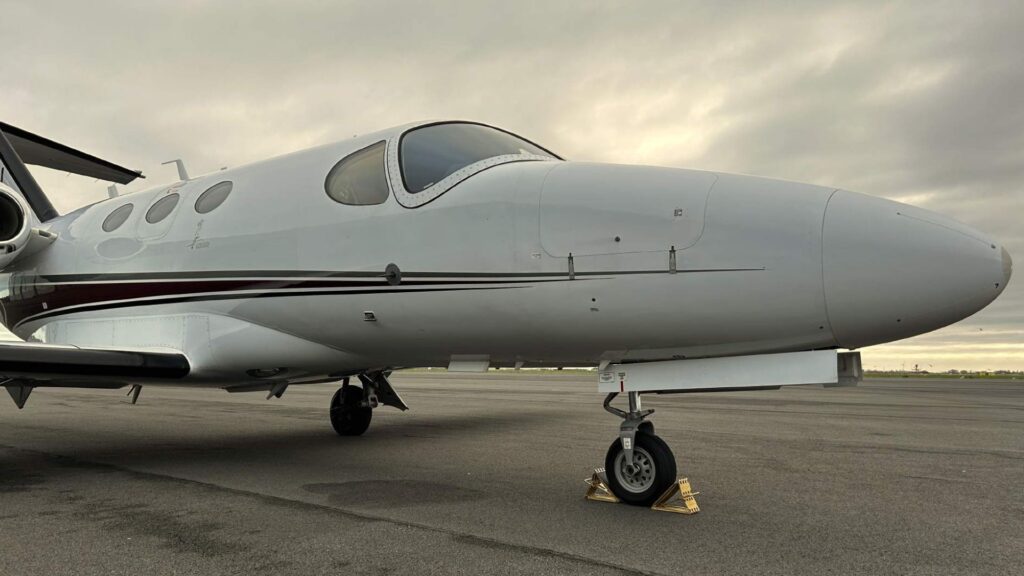
Cabin Comfort and Amenities
The Mustang’s cabin, while well-appointed for its category, is noticeably more compact than the M2’s. The M2’s additional cabin volume translates to improved headroom and overall passenger comfort, making it better suited for slightly longer journeys. While neither aircraft typically offers hot catering capabilities, the M2 generally provides enhanced passenger amenities and connectivity options that meet expectations of today’s private jet travelers.
Furthermore, the Cessna Citation Mustang is equipped with an emergency toilet facing the entrance door in front of the passenger cabin. The Citation M2 has a fully enclosed lavatory located in the back of the aircraft, giving passengers more privacy if they need to go.
Performance Metrics
The performance difference between these aircraft is substantial:
| Cessna Citation Mustang | Cessna Citation M2 | |
|---|---|---|
| Aircraft Type | Entry Level Jet | Light Jet |
| Cruise Speed | 630 km/h | 748 km/h |
| Maximum Range | 2,222 km | 2,871 km |
| Passenger Capacity | 4 | 5 – 7 |
These performance improvements allow M2 operators to offer faster travel times and more direct routing options, particularly valuable in the diverse European market where short to medium-range flights between business centers predominate.
Charter Economics
The economic difference between these aircraft is reflected in their charter rates:
- Cessna Citation Mustang Charter Price: Approximately € 2,500 per flight hour
- Cessna Citation M2 Charter Price: Approximately € 4,000 per flight hour
This significant price differential reflects not only the M2’s enhanced capabilities but also the fact that most Mustangs in the charter fleet are older aircraft with depreciated acquisition costs, while the M2 fleet is younger and incorporates more modern technology.
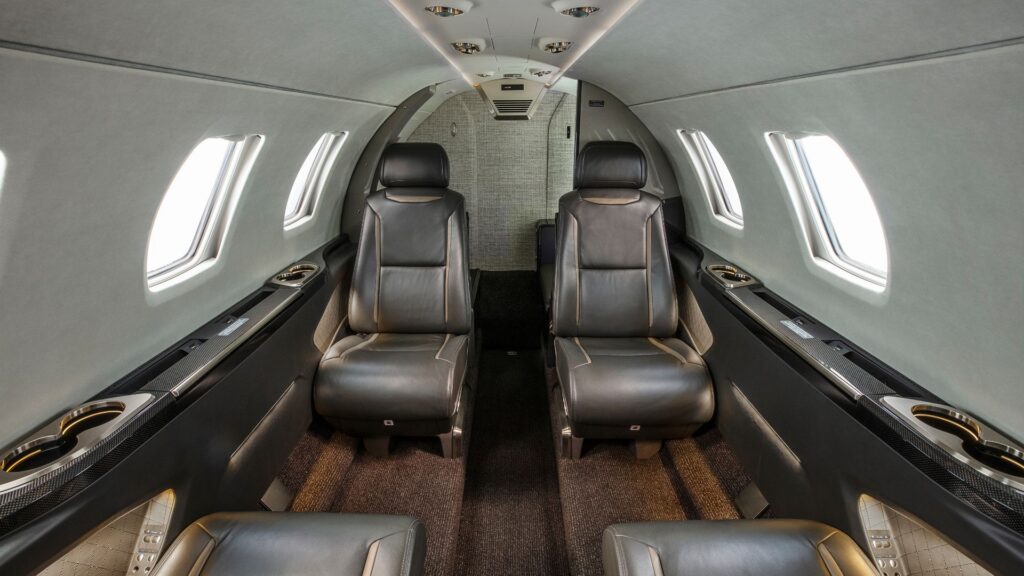
Conclusion: Making the Right Choice in Today’s Market
For European charter clients and operators, both the Mustang and M2 continue to serve important roles in the segment of small business jets. The Mustang remains a cost-effective option for shorter trips and smaller groups, with its lower hourly rates making private aviation accessible to a broader client base. However, the increased cost of maintaining aging Mustangs is an important consideration for long-term fleet planning.
The Citation M2 represents a clear advancement in capabilities, offering improved performance and a more spacious cabin with more legroom – but at a price. For operators considering fleet replacement strategies, the M2 provides a logical upgrade path as Mustangs reach maintenance-intensive lifecycle milestones.
Meanwhile, charter clients benefit from having both options in the marketplace, allowing them to select the aircraft that best matches their specific mission requirements and budget constraints. Whether operating the pioneering Mustang or the more advanced M2, Textron Aviation’s legacy in the light jet segment continues to shape private aviation throughout Europe, providing efficient, capable transportation solutions for discerning travelers.



